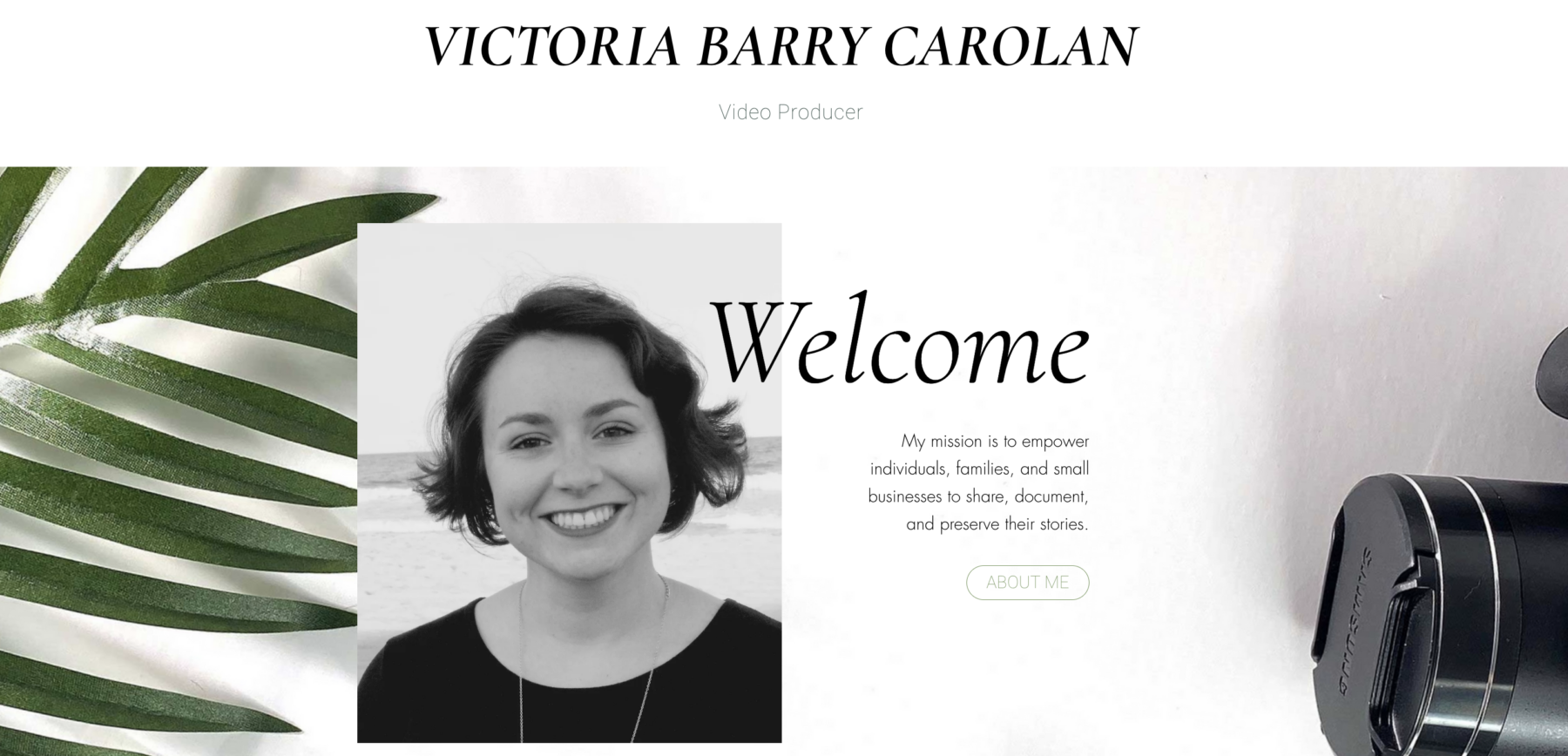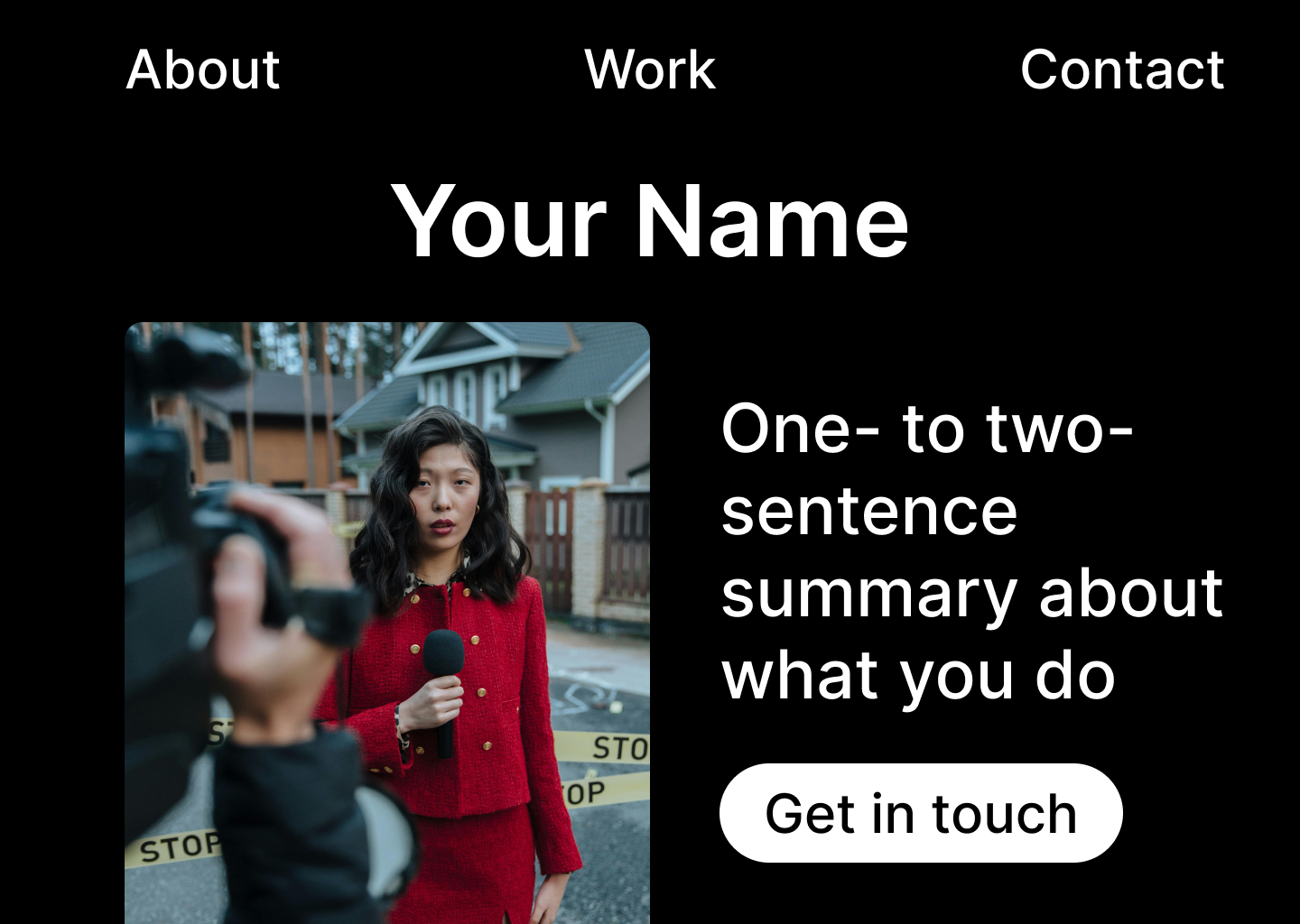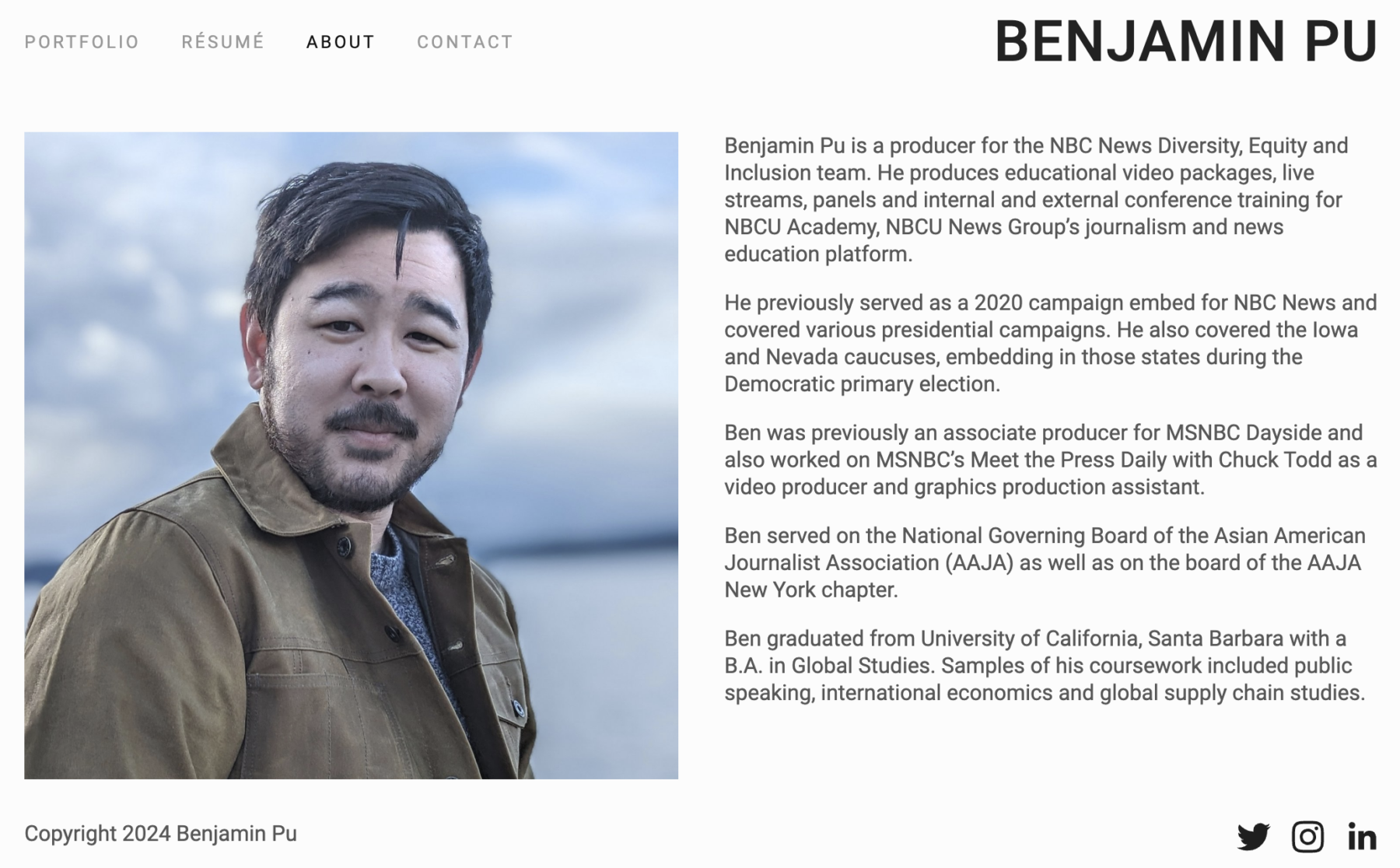
Step into a museum and you expect to see a curated gallery of work — Impressionist paintings, Hindu sculpture or a wing of Middle Eastern pottery. But what if you entered the Metropolitan Museum of Art or your favorite local gallery and saw a large-format takeout menu? That would be confusing at best and off-putting at worst.
The same applies to curating a website of your work. When a personal site is treated like a collection of work rather than a menu of offerings, your audience will better understand what you do and what you’re about.
We spoke with hiring managers and recruiters across NBCUniversal to hear what they look for in candidates’ portfolios and how they update their own websites.
Why have a personal website?

Personal websites are living portfolios for candidates to share their work with recruiters and hiring managers, instead of lugging around business cards or physical folders. “You can shoot a wider net across social platforms, across companies,” said Joel Michon, vice president of creative at NBCUniversal Local ArtHouse.
Including your website link in job applications tells potential employers a personal story that goes beyond your resume. “Specifically in animation and in a creative role, we need you to be able to show some of your authentic self,” said Jillian Gomez, DreamWorks Animation’s artistic recruiter. Having an internet presence also makes you more searchable to potential employers or funders. “There are so many artists that I’ve actually really wanted to support, and I can’t figure out how to reach out to them,” said nell augustin, director of NBCU Academy’s Original Voices, an artist development and inclusion initiative for independent documentary filmmakers.
Designing your home page

When visitors come to your website, they should see three things: the work you do, examples of your past projects and your contact information. Gather elements before you build your site to avoid unnecessary details.
Your homepage should include your name, an easy navigation menu, a visual element to show your work and a simple one- to two-sentence summary about what kind of work you do.
The visual element can be a large image of you in action or a short clip of your work. Designers can share screen recordings of their work, or TV reporters can show themselves in front of cameras during live shots.
Michon said the visual element should be “definitely simple, fast, very clean. Don’t overdesign it.”
Setting up your navigation menu
Your navigation menu should include “About,” “Work” and “Contact,” or variations that reflect your specific role, such as “Reporting” or “Articles” for journalists instead of “Work.”

A broadcast journalist’s site should include a demo reel, followed by a gallery of individual packages. Journalists who work in text can create galleries of thumbnails – or clickable lead art and the headlines – of their articles published online. Seasoned journalists can break up their work based on types of reporting, including breaking news, features and specials. Journalists who work in specific beats should include a variety of work within those beats.
Emily Porter, NBCUniversal’s principal recruiter, recommended choosing “pieces you’ve done that have resonated with you and may have resonated with the audience the most.”
If you’re pivoting from one medium to another, show how your previous work informs your current role. “If you’re a journalist covering public health stories and you want to make a film about public health, show you’ve been committed to this kind of storytelling and these issues,” augustin said. “Even if it’s not the same medium.”

The “About” page expands on your homepage’s summary with a one-paragraph introduction that explains what makes you who you are.
Scott Williams, NBCUniversal Talent’s acquisition director, said balance is important when you’re writing your “About” section. “Skills are the primary requirement, but learning a little bit about you helps contextualize the work you’ve chosen to showcase,” he said.
If you’re comfortable, include your email address and embed your resume for download on your “About” page or a separate “Contact” page. Some website templates offer contact forms that send emails to your inbox, but know that recruiters and editors might be more likely to reach out if they have direct contact info.
Choosing a domain, building the personal website
Select a domain (or web address) using host sites like GoDaddy or WordPress to search for names that are available. Most people will use their own names and aim for addresses that end in “.com” to make good impressions with recruiters. For example, victoriabarrycarolan.com is the domain of the author’s website.
People used to need specialized coding skills to make websites. Today, anyone can make one at low cost. The most popular website builders for portfolios are Wix, Squarespace and WordPress, and they are all beginner-friendly and have low monthly hosting fees.
Now it’s time to choose a layout. Pick a template that will give you the flexibility to add the elements you gathered. Don’t overload your website; rather, keep your webpages minimal; limit the number of high-resolution images, videos and animations; and embed videos using YouTube or Vimeo links.
The goal is to improve load time for desktop and mobile, so visitors don’t click away before they see your work. “I absolutely cannot stand it when I click a link to somebody’s page and I’m excited to see their work, and then it’s not there,” Porter said.
If you need inspiration about which template to pick, check out the sites of people you admire, particularly within your industry. “You should be utilizing the most basic skill set of journalism and doing research,” Porter said.
Getting honest feedback
When you’re done building your site, don’t send it out just yet. Ask friends or mentors to weigh in on your writing and whether the site is user-friendly.
When site updates are complete, announce it to your network. Encouraging visitors on LinkedIn and at networking events will help you gather analytical insights for traffic to your website.
Hyperlink your website URL in your resume and job applications and submit your resume and website to talent communities, portals run by recruiters at companies like NBCUniversal. Find similar job sites with companies you want to work for and add your resume to their applicant tracking systems to maximize your reach beyond applications.
📧 Want more career and job search tips?
Subscribe to The Weekly Rundown for our latest content straight to your inbox.


